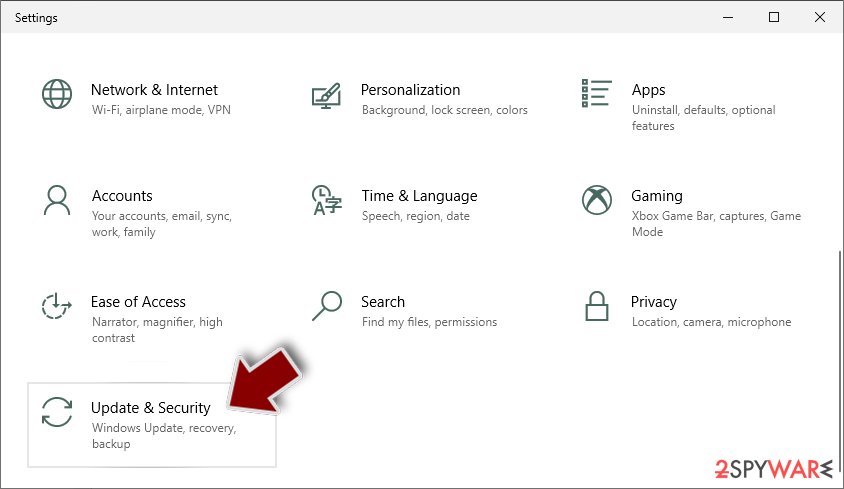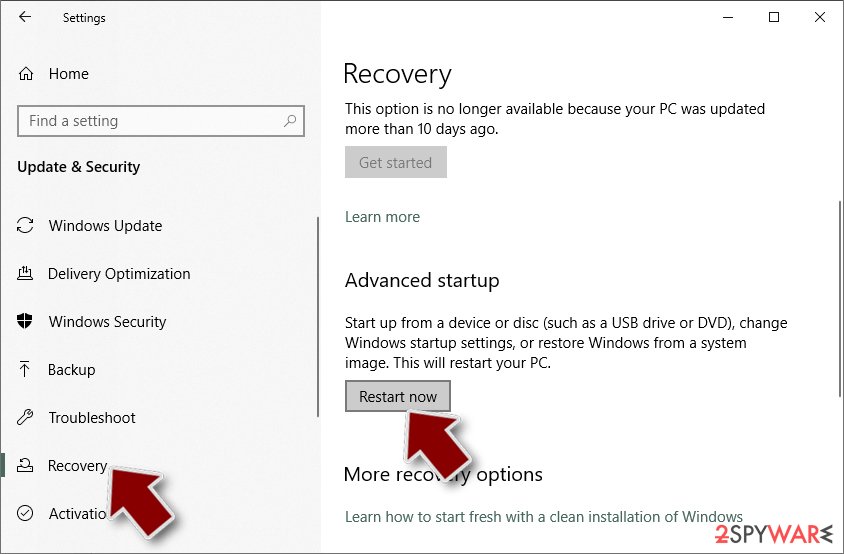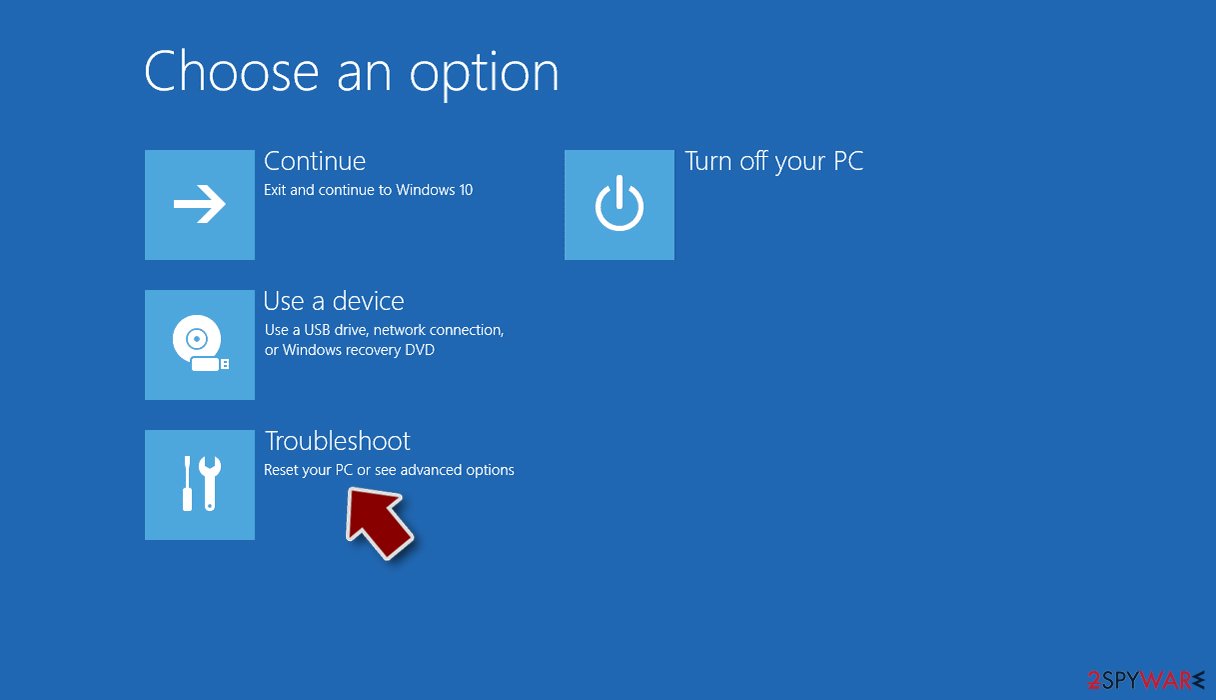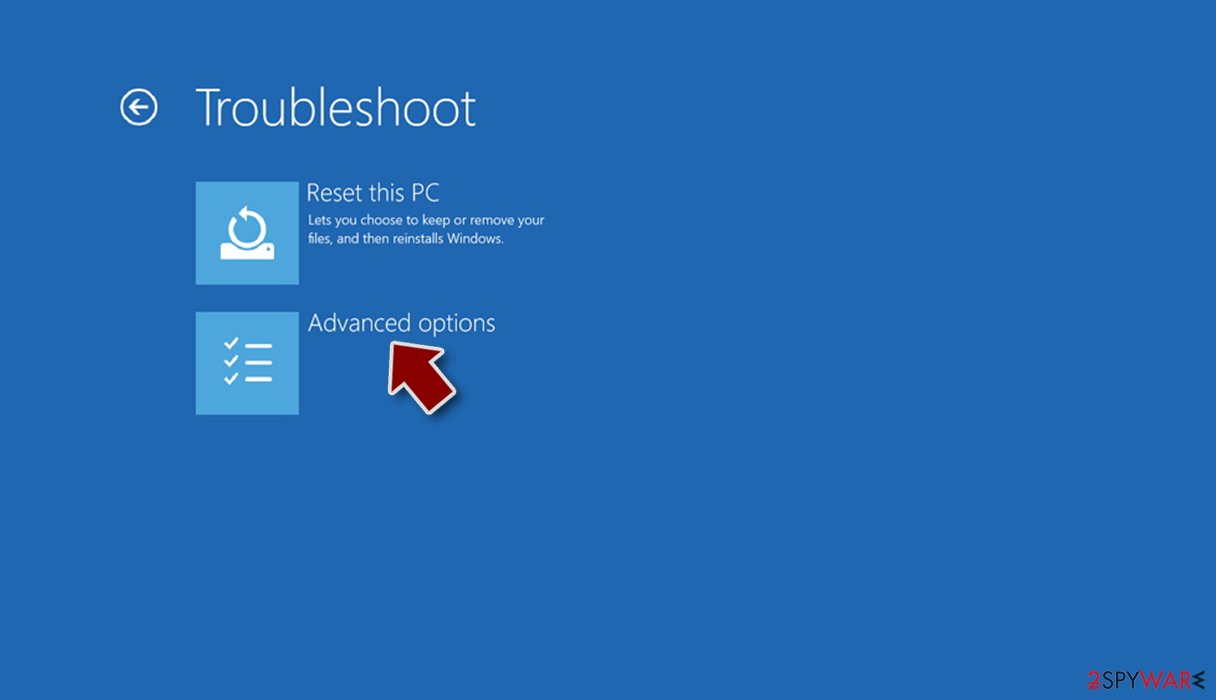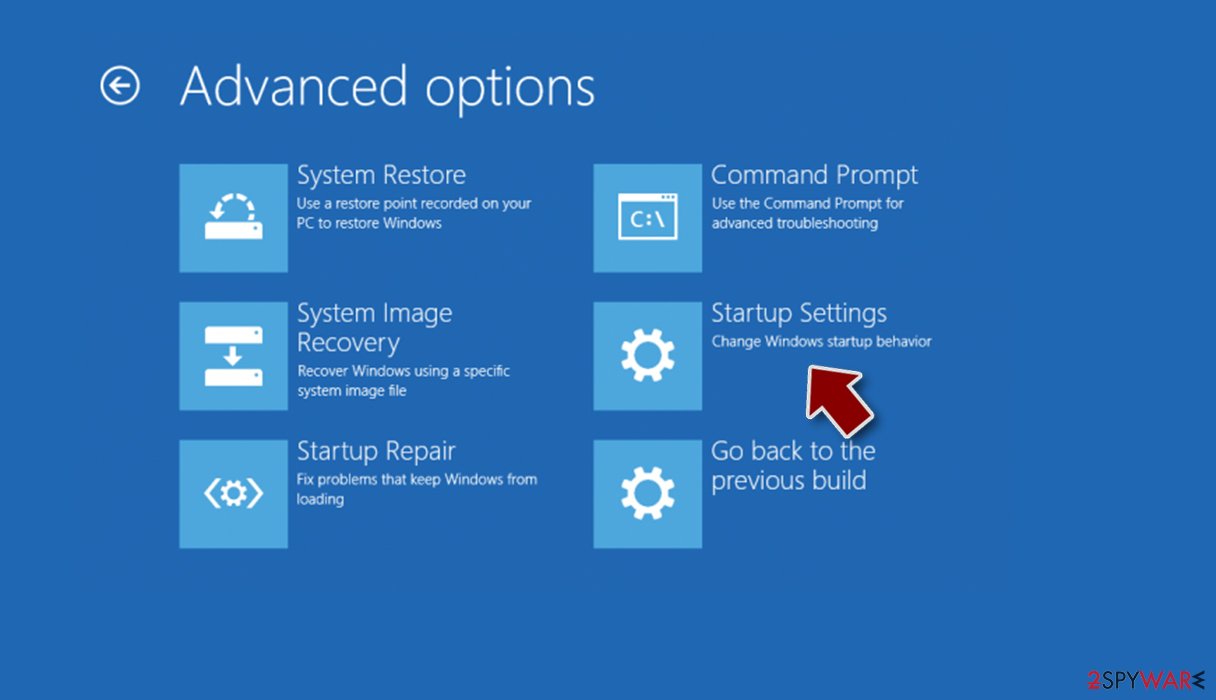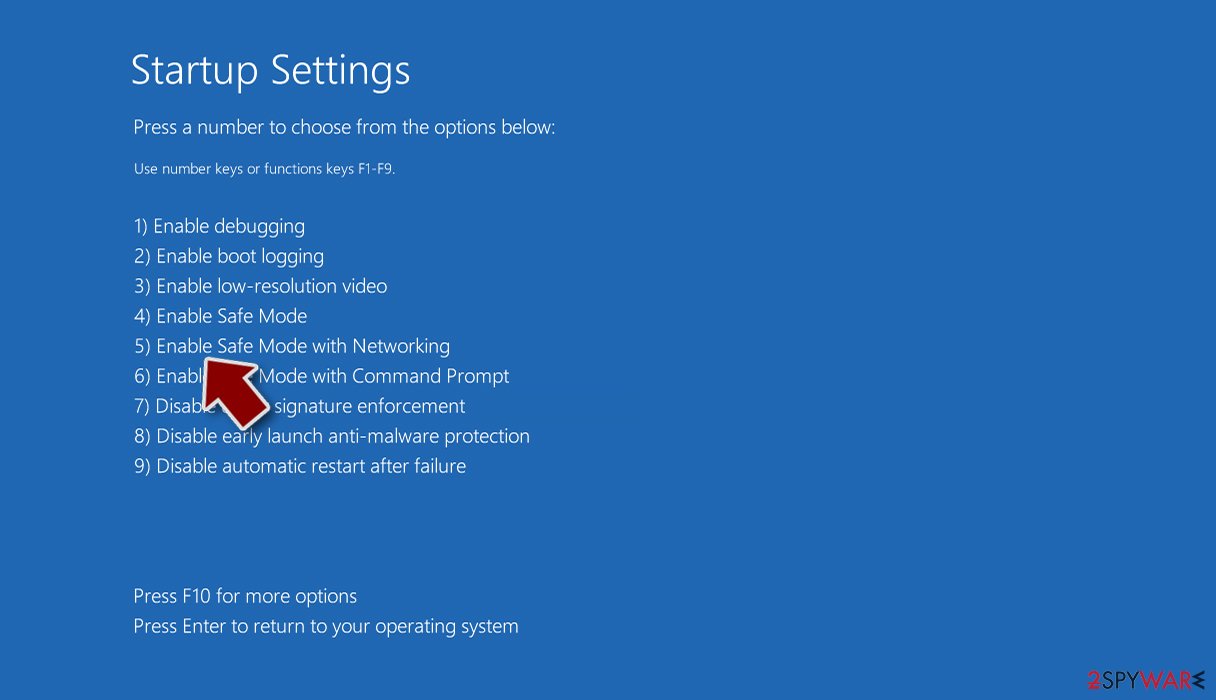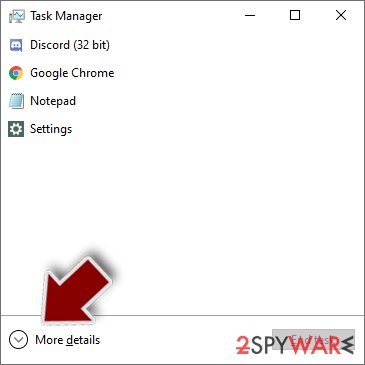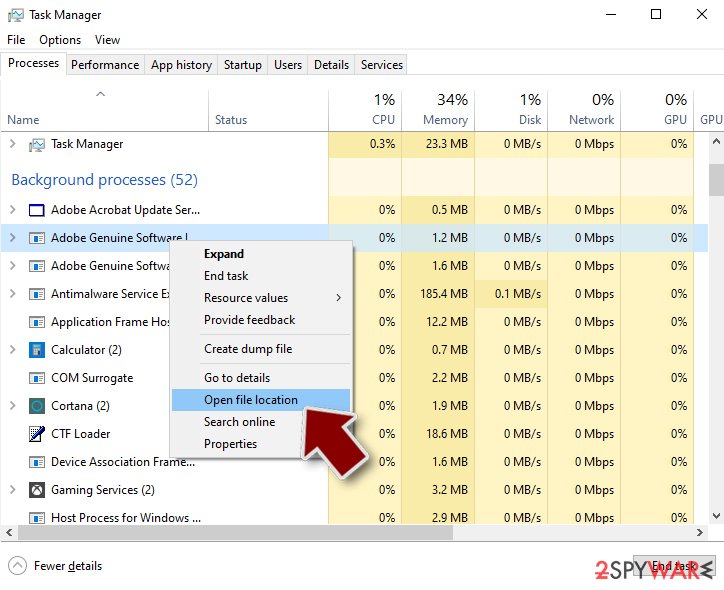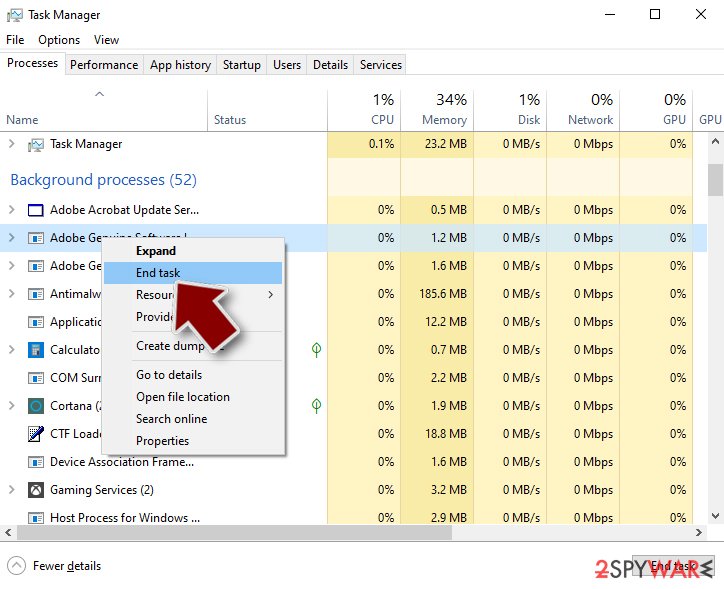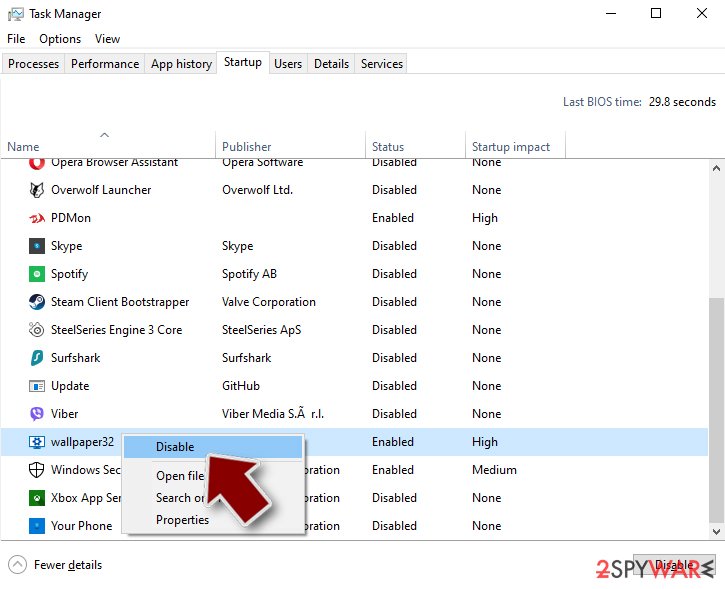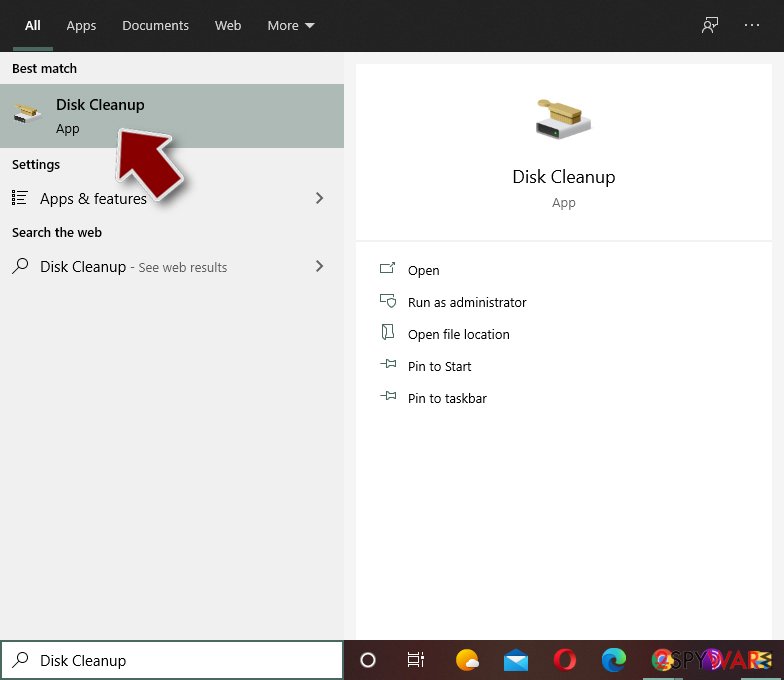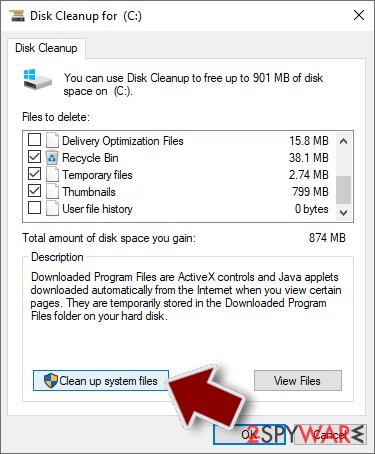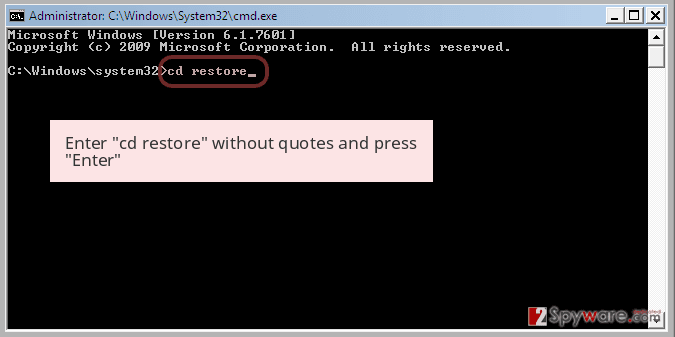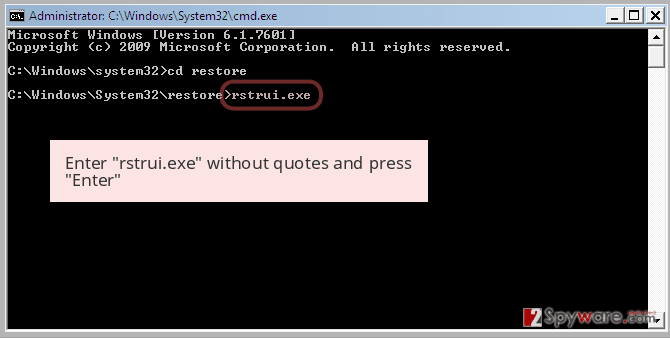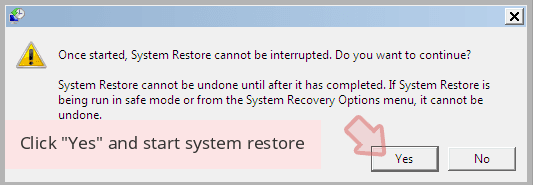EVEREST ransomware (Removal Guide) - Decryption Methods Included
EVEREST virus Removal Guide
What is EVEREST ransomware?
EVEREST ransomware is the cryptovirus which encrypts data using AES and DES algorithms
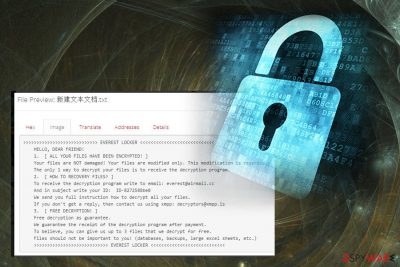
EVEREST ransomware is a virus that locks users' data and demands ransom in cryptocurrency. Also known as EVEREST LOCKER, this cryptovirus hails from the already known family of Everbe 2.0 ransomware. Ransomware infiltrates the system without your consent, then it encodes various files on the device and appends .[everest@airmail.cc].EVEREST file extension to the target data. This file marker indicates modified data which is inaccessible due to the encryption algorithm.[1] When your files are locked, virus developers place the ransom file on the system in every folder with encrypted data and on your desktop. It is called EVEREST LOCKER .txt or 新建文本文档.txt which can be found on the device and contains more information about the initial attack.
| Name | Everest ransomware |
|---|---|
| Type | Cryptovirus |
| Related | Everbe 2.0 |
| File extension | .[everest@airmail.cc].EVEREST |
| Ransom note | EVEREST LOCKER .txt / 新建文本文档.txt |
| Ransom amount | Not disclosed |
| Contact email | everest@airmail.cc |
| Distribution | Spam email attachments |
| Elimination | Use FortectIntego for EVEREST ransomware removal |
EVEREST ransomware virus belongs to a family of not decryptable ransomware, so that means it is not possible to recover files after the encryption process this virus performs on your data. However, you can replace encoded files with safe copies, or use data recovery software to restore them.
However, EVEREST ransomware encryption is a dangerous process because developers are using military-grade encryption algorithms to make your data inaccessible. Unfortunately, you cannot open your photos, documents, music or video files after this procedure and use their content are you normally do. The only solution is to remove the threat and clean the system.
In addition to the encryption process, Everest Locker applies the following command and deletes Shadow Volume Copies: vssadmin.exe delete shadows /all /Quiet. It also makes several changes in the system which it affects:
- system folders and files;
- registry entries;
- device functions;
- your AV functionality.
When EVEREST ransomware is done with encrypting your data, it marks those files using .[everest@airmail.cc].EVEREST extension and generates the ransom note as a text file called EVEREST LOCKER.txt and 新建文本文档.txt. The ransom message reads the following:
>>>>>>>>>>>>>>>>>>>>>>>>>>>> EVEREST LOCKER <<<<<<<<<<<<<<<<<<<<<<<<<<<<
HELLO, DEAR FRIEND!
1. [ ALL YOUR FILES HAVE BEEN ENCRYPTED! ]
Your files are NOT damaged! Your files are modified only. This modification is reversible.
The only 1 way to decrypt your files is to receive the decryption program.
2. [ HOW TO RECOVERY FILES? ]
To receive the decryption program write to email: everest@airmail.cc
And in subject write your ID: ID-
We send you full instruction how to decrypt all your files.
If you don't get a reply, then contact us using xmpp: decryptors@xmpp.is
3. [ FREE DECRYPTION! ]
Free decryption as guarantee.
We guarantee the receipt of the decryption program after payment.
To believe, you can give us up to 3 files that we decrypt for free.
Files should not be important to you! (databases, backups, large excel sheets, etc.)
>>>>>>>>>>>>>>>>>>>>>>>>>>>> EVEREST LOCKER <<<<<<<<<<<<<<<<<<<<<<<<<<<<
Developers of EVEREST ransomware state that they can decrypt your files and offers you to test decryption. However, we and other analysts[2] do not recommend contacting these hackers. Especially when paying the ransom may lead to more severe issues with your device or privacy.[3]
Make sure to remove EVEREST ransomware as soon as you notice this final stage of ransomware attack and clean the system thoroughly before moving on with data recovery. You need to double-check if your computer is clear before plugging any external device or downloading anything else.
Use only trustworthy antimalware for EVEREST ransomware removal as it will help you detect all related files, remove malicious programs and fix the damage. Double-check the device using FortectIntego to make sure that your system is clear. Then, you can try data recovery methods listed down below if you have no backups.
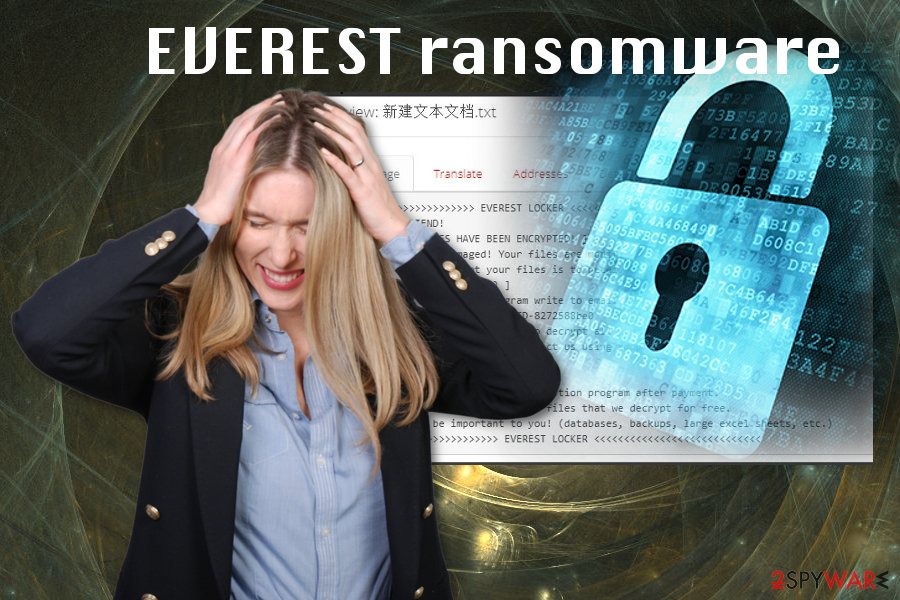
A ransomware payload dropper hide in spam email file attachments
Cyber infections have multiple distribution ways and can be easily spread around the world. Malicious script can be initiated from the payload directly, or other malicious programs distribute ransomware around. When the file lands on your system and code is launched, the system becomes infected, and ransomware starts its infiltration.
Spam email box fills up with commercial emails from companies and advertisers, but there is a possibility that malicious emails go straight to your email box and not as spam. Since malicious actors disguise their emails with known company names and subject lines like Invoice or Receipt people, tend to open them without paying much attention.
When you receive an email that contains financial information or MS Word or Excel file be aware that documents may be filled with malicious macros. Do not open the email if you haven't waited for one and do not download any data on the system without checking the sender and email itself.
Terminate EVEREST ransomware and learn how to avoid cyber infections
You need to remove EVEREST ransomware from the system immediately after you noticed the existence and encryption. Ransomware starts with editing the registry, so it makes the virus persistent, but you need to get rid of the threat until it affected more severe parts of your PC.
EVEREST ransomware removal should be performed using anti-malware tools because manual virus removal is not giving you the wanted results. Using FortectIntego, SpyHunter 5Combo Cleaner or Malwarebytes for a thorough system scan helps improve the overall security of your computer. During such your device is scanned and cleaned, all ransomware related files removed and terminated. After this process, you can attempt file recovery using your preferred method.
However, there is a possibility that ransomware disabled some functions of your antivirus or keeps anti-malware from working as it supposed to. You may need to enter the Safe Mode before you scan the system. You can follow our step-by-step guides below to make sure everything is cleaned properly before you recover your files.
Getting rid of EVEREST virus. Follow these steps
Manual removal using Safe Mode
Reboot your device in Safe Mode with Networking before performing a full system scan so that you can remove EVEREST ransomware from the system for sure. Follow these steps to do so:
Important! →
Manual removal guide might be too complicated for regular computer users. It requires advanced IT knowledge to be performed correctly (if vital system files are removed or damaged, it might result in full Windows compromise), and it also might take hours to complete. Therefore, we highly advise using the automatic method provided above instead.
Step 1. Access Safe Mode with Networking
Manual malware removal should be best performed in the Safe Mode environment.
Windows 7 / Vista / XP
- Click Start > Shutdown > Restart > OK.
- When your computer becomes active, start pressing F8 button (if that does not work, try F2, F12, Del, etc. – it all depends on your motherboard model) multiple times until you see the Advanced Boot Options window.
- Select Safe Mode with Networking from the list.

Windows 10 / Windows 8
- Right-click on Start button and select Settings.

- Scroll down to pick Update & Security.

- On the left side of the window, pick Recovery.
- Now scroll down to find Advanced Startup section.
- Click Restart now.

- Select Troubleshoot.

- Go to Advanced options.

- Select Startup Settings.

- Press Restart.
- Now press 5 or click 5) Enable Safe Mode with Networking.

Step 2. Shut down suspicious processes
Windows Task Manager is a useful tool that shows all the processes running in the background. If malware is running a process, you need to shut it down:
- Press Ctrl + Shift + Esc on your keyboard to open Windows Task Manager.
- Click on More details.

- Scroll down to Background processes section, and look for anything suspicious.
- Right-click and select Open file location.

- Go back to the process, right-click and pick End Task.

- Delete the contents of the malicious folder.
Step 3. Check program Startup
- Press Ctrl + Shift + Esc on your keyboard to open Windows Task Manager.
- Go to Startup tab.
- Right-click on the suspicious program and pick Disable.

Step 4. Delete virus files
Malware-related files can be found in various places within your computer. Here are instructions that could help you find them:
- Type in Disk Cleanup in Windows search and press Enter.

- Select the drive you want to clean (C: is your main drive by default and is likely to be the one that has malicious files in).
- Scroll through the Files to delete list and select the following:
Temporary Internet Files
Downloads
Recycle Bin
Temporary files - Pick Clean up system files.

- You can also look for other malicious files hidden in the following folders (type these entries in Windows Search and press Enter):
%AppData%
%LocalAppData%
%ProgramData%
%WinDir%
After you are finished, reboot the PC in normal mode.
Remove EVEREST using System Restore
Enable the System Restore feature. This also could help in EVEREST ransomware removal:
-
Step 1: Reboot your computer to Safe Mode with Command Prompt
Windows 7 / Vista / XP- Click Start → Shutdown → Restart → OK.
- When your computer becomes active, start pressing F8 multiple times until you see the Advanced Boot Options window.
-
Select Command Prompt from the list

Windows 10 / Windows 8- Press the Power button at the Windows login screen. Now press and hold Shift, which is on your keyboard, and click Restart..
- Now select Troubleshoot → Advanced options → Startup Settings and finally press Restart.
-
Once your computer becomes active, select Enable Safe Mode with Command Prompt in Startup Settings window.

-
Step 2: Restore your system files and settings
-
Once the Command Prompt window shows up, enter cd restore and click Enter.

-
Now type rstrui.exe and press Enter again..

-
When a new window shows up, click Next and select your restore point that is prior the infiltration of EVEREST. After doing that, click Next.


-
Now click Yes to start system restore.

-
Once the Command Prompt window shows up, enter cd restore and click Enter.
Bonus: Recover your data
Guide which is presented above is supposed to help you remove EVEREST from your computer. To recover your encrypted files, we recommend using a detailed guide prepared by 2-spyware.com security experts.If your files are encrypted by EVEREST, you can use several methods to restore them:
You should try Data Recovery Pro and restore your files after EVEREST ransomware attack
If your files haven't been backed up recently, you may need to use software for this. Data Recovery Pro can help with encoded or accidentally deleted data
- Download Data Recovery Pro;
- Follow the steps of Data Recovery Setup and install the program on your computer;
- Launch it and scan your computer for files encrypted by EVEREST ransomware;
- Restore them.
Windows Previous Versions feature should also help if file recovery
A good alternative for your file backups can be Windows Previous Versions feature. However, System Restore should be enabled before
- Find an encrypted file you need to restore and right-click on it;
- Select “Properties” and go to “Previous versions” tab;
- Here, check each of available copies of the file in “Folder versions”. You should select the version you want to recover and click “Restore”.
ShadowExplorer for the help
EVEREST ransomware has deleted Shadow Volume Copies for the most part, but you can still try to recover your data using ShadowExplorer
- Download Shadow Explorer (http://shadowexplorer.com/);
- Follow a Shadow Explorer Setup Wizard and install this application on your computer;
- Launch the program and go through the drop down menu on the top left corner to select the disk of your encrypted data. Check what folders are there;
- Right-click on the folder you want to restore and select “Export”. You can also select where you want it to be stored.
EVEREST ransomware is not decryptable
Finally, you should always think about the protection of crypto-ransomwares. In order to protect your computer from EVEREST and other ransomwares, use a reputable anti-spyware, such as FortectIntego, SpyHunter 5Combo Cleaner or Malwarebytes
How to prevent from getting ransomware
Stream videos without limitations, no matter where you are
There are multiple parties that could find out almost anything about you by checking your online activity. While this is highly unlikely, advertisers and tech companies are constantly tracking you online. The first step to privacy should be a secure browser that focuses on tracker reduction to a minimum.
Even if you employ a secure browser, you will not be able to access websites that are restricted due to local government laws or other reasons. In other words, you may not be able to stream Disney+ or US-based Netflix in some countries. To bypass these restrictions, you can employ a powerful Private Internet Access VPN, which provides dedicated servers for torrenting and streaming, not slowing you down in the process.
Data backups are important – recover your lost files
Ransomware is one of the biggest threats to personal data. Once it is executed on a machine, it launches a sophisticated encryption algorithm that locks all your files, although it does not destroy them. The most common misconception is that anti-malware software can return files to their previous states. This is not true, however, and data remains locked after the malicious payload is deleted.
While regular data backups are the only secure method to recover your files after a ransomware attack, tools such as Data Recovery Pro can also be effective and restore at least some of your lost data.
- ^ Rick Correa. How fast does ransomware encrypt files?. BarklyBlog. Endpoint protection platform.
- ^ Bedynet. Bedynet. Spyware related news.
- ^ Mathew J. Schwartz. Ransomware: is it ever OK to pay?. Bankinfosecurity. News, training and education.


